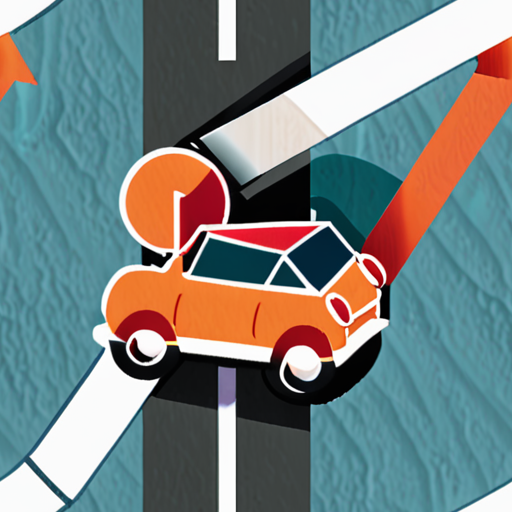“`html
If you’re scratching your head trying to figure out how much wheel alignment should cost, you’re not alone. Navigating the maze of vehicle maintenance expenses can be daunting, but wheel alignment is a crucial service that can save you money in the long run. In this comprehensive guide, we’ll dive deep into the factors that influence car wheel alignment cost, explaining why prices can vary based on the type of vehicle, location, and the specific alignment service. Whether you’re weighing the pros and cons of a DIY approach versus professional services, or looking for signs that your wheels might be misaligned, this article will help you make informed decisions. Discover cost-effective alignment options near you and understand the importance of regular alignments for your vehicle’s safety and fuel efficiency. Let’s explore everything from standard to precision wheel alignments and unravel the mystery of those varied price tags—from how much a simple alignment at Jiffy Lube might cost to insights from car owners on Reddit about wheel alignment expenses.
“`
Cost of Wheel Alignment
The cost of a wheel alignment can vary greatly depending on several factors, including the type of alignment, location, and service provider.
- National Average: According to various estimates, the national average for a complete wheel alignment service ranges from $50 to $168.
- Factors Affecting Cost: Several factors can influence the cost of a wheel alignment, including the type of alignment (e.g., basic, advanced, or precision), the number of vehicles being aligned, and the level of expertise required.
- Service Provider: The cost of a wheel alignment can also depend on the service provider, with some shops charging more than others for the same service.
- Type of Vehicle: The type of vehicle being aligned can also impact the cost, with larger or heavier vehicles often requiring more complex alignments and therefore costing more.
In addition to these factors, some service providers may offer package deals or discounts for customers who bundle services together, such as a wheel alignment and tire rotation.
When seeking a wheel alignment, it’s essential to research local service providers and compare prices to find the best option for your needs and budget.
Some popular options for wheel alignment services include:
- Firestone Complete Auto Care
- Meineke Car Care Centers
- Midas
These companies offer a range of wheel alignment services and may have locations near you.
Ultimately, the cost of a wheel alignment will depend on your specific needs and circumstances, so be sure to consult with a trusted mechanic or service provider to determine the best course of action.
Cost of Wheel Alignment
The cost of wheel alignment varies depending on several factors, including the type of vehicle, its age, and the level of maintenance.
- In the UK, drivers can expect to pay around £80 to have their front and rear tyres realigned.
- This cost may be higher for luxury vehicles or those with advanced safety features.
- Some garages may charge extra for additional services, such as tyre balancing or suspension checks.
It’s worth noting that regular wheel alignments can help prevent uneven tyre wear, improve fuel efficiency, and reduce the risk of accidents caused by poor handling.
At Incubus Wheels, we recommend having your wheels aligned every 12 months or whenever you notice any signs of misalignment, such as vibrations or pulling to one side.
For more information on wheel alignment and other car maintenance tips, visit our car maintenance tips page .
We also recommend checking out the work of other reputable garages, such as Kwik Fit, who offer a range of wheel alignment services.
Remember to always choose a garage that uses high-quality equipment and has experienced technicians to ensure a safe and reliable service.
By prioritising wheel alignment and regular car maintenance, you can help extend the life of your vehicle and keep it running smoothly for years to come.

Driving with Bad Alignment: Safety Risks and Consequences
Driving a car with bad alignment can have serious safety implications and lead to costly repairs.
- Safety Risks:
- Compromised handling and braking performance can increase the risk of accidents.
- Poor tire wear and uneven tread wear can cause loss of traction, leading to skidding or hydroplaning.
- Bad alignment can also affect steering and suspension, making it difficult to control the vehicle.
- Additional Damage:
- Continuing to drive with a misaligned car can cause further damage to suspension components and other parts.
- This can lead to more expensive repairs down the road.
- Regular maintenance and inspections can help prevent these issues and extend the life of your vehicle.
- A well-aligned vehicle ensures optimal tire wear and fuel efficiency.
- It also helps prevent premature wear on suspension and steering components.
- Regular checks and adjustments can help identify potential issues before they become major problems.
- The technician will measure the angles of the wheels and compare them to the manufacturer’s specifications.
- Any deviations will be noted and adjusted accordingly.
- The process usually takes around 30 minutes to an hour, depending on the complexity of the issue.
- If you drive aggressively or frequently tow trailers, you may need to get your vehicle aligned every 12,000 to 15,000 miles.
- For average drivers, alignments are recommended every 15,000 to 20,000 miles.
- However, it’s always best to consult your owner’s manual or speak with a trusted mechanic for personalized recommendations.
- Drive smoothly and avoid sudden turns or hard braking.
- Avoid hitting potholes or curbs, which can cause damage to the suspension and steering systems.
- Keep your tires properly inflated and balanced to reduce wear and tear.
Why Regular Maintenance Matters
Maintaining your vehicle’s alignment is crucial for its overall health and performance.
What to Expect During an Alignment Check
An alignment check typically involves inspecting the vehicle’s suspension and steering systems.
How Often Should You Get Your Vehicle Aligned?
The frequency of alignment checks depends on various factors, including driving habits and conditions.
Preventing Bad Alignment in the First Place
While regular maintenance is essential, there are steps you can take to prevent bad alignment from occurring in the first place.

The Cost of Car Wheel Alignment
The cost of car wheel alignment varies depending on several factors, including the type of vehicle, the extent of the misalignment, and the location.
- Tire Shops: Typically charge between $50-$100 per axle for a basic wheel alignment, with prices ranging from $75-$125 for a more advanced alignment.
- Dealerships: May charge upwards of $150-$250 per axle for a basic wheel alignment, with prices ranging from $225-$350 for a more advanced alignment.
- Independent Mechanics: Often charge lower prices, typically between $30-$70 per axle for a basic wheel alignment, with prices ranging from $50-$120 for a more advanced alignment.
Some service centers may offer packages for both alignment and balancing, which can range from $150 to $300.
Additionally, some shops may charge extra for services such as:
- Computerized wheel alignment ($10-$30)
- Advanced wheel alignment systems ($20-$50)
- Alignment checks ($10-$20)
It’s essential to note that these prices are estimates and may vary depending on your location and the specific shop you visit.
We recommend checking with local tire shops, dealerships, and independent mechanics to get a more accurate estimate of the cost of car wheel alignment in your area.
At Incubus Wheels , we understand the importance of proper wheel alignment for optimal vehicle performance and safety.
Our team of experts can help you determine the best course of action for your vehicle’s wheel alignment needs.
Contact us today to schedule an appointment and take advantage of our competitive pricing and exceptional customer service.
Driving with a Wheel Alignment Issue
When you notice that your vehicle is pulling to one side or vibrating excessively, it could be a sign of a wheel alignment issue.
- Tire wear can increase significantly due to uneven tire pressure and stress on the tire tread.
- The increased friction between the tire and road surface can lead to reduced fuel efficiency.
- Poor handling and stability can cause accidents, especially during high-speed driving conditions.
Why Driving with a Misaligned Vehicle is Not Recommended
Driving with a misaligned vehicle can have severe consequences on your safety and the longevity of your vehicle.
- Uneven tire wear can lead to premature tire replacement, which can be costly.
- Reduced fuel efficiency can result in increased fuel consumption and higher emissions.
- Poor handling can cause accidents, leading to injuries and property damage.
What to Do If You Suspect a Wheel Alignment Issue
If you suspect that your vehicle has a wheel alignment issue, it is essential to have it checked and corrected as soon as possible.
- Contact a professional mechanic or auto repair shop for assistance.
- Have your vehicle inspected and aligned according to the manufacturer’s specifications.
- Maintain regular tire rotations and inspections to prevent further issues.
Preventing Wheel Alignment Issues
Regular maintenance and inspections can help prevent wheel alignment issues and extend the life of your vehicle.
- Check your owner’s manual for recommended tire rotation schedules.
- Monitor your tire pressure regularly and adjust as needed.
- Avoid extreme driving conditions, such as off-roading or racing, which can cause excessive wear on your tires.
Conclusion is not necessary

Signs of Poor Wheel Alignment
As a car enthusiast, it’s essential to recognize the warning signs of poor wheel alignment to prevent damage to your vehicle and ensure optimal performance.
- Tire Wear Patterns
- Uneven Tire Wear
- Vehicle Pulling to One Side
- Steering Issues
- Noise While Driving
Tires with uneven wear patterns can indicate misaligned wheels. Check for excessive wear on the center of the tire, which could mean the wheels are toe-in or toe-out.
Inspect your tires regularly for uneven wear, as this can lead to reduced traction and increased risk of accidents.
If your vehicle consistently pulls to one side while driving, it may be a sign of poor wheel alignment.
Difficulty steering or feeling vibrations while driving can be caused by misaligned wheels.
Loud noises while driving, such as clunking or grinding sounds, can indicate worn-out suspension components due to poor wheel alignment.
Causes of Poor Wheel Alignment
Poor wheel alignment can result from various factors, including:
- Accidents or Collisions
- Worn-Out Suspension Components
- Loose Lug Nuts
- Driving Habits
Even minor accidents can cause wheel misalignment, leading to decreased fuel efficiency and uneven tire wear.
Damaged or worn-out suspension parts can affect wheel alignment, causing uneven tire wear and reduced handling.
Over-tightened or loose lug nuts can cause wheel misalignment, compromising safety and performance.
Aggressive driving habits, such as rapid acceleration or braking, can lead to wheel misalignment.
Prevention and Maintenance
To prevent poor wheel alignment, regular maintenance is crucial. Schedule checks every 12,000 miles or as recommended by your vehicle manufacturer.
- Check Tire Pressure Regularly
- Rotate Tires Properly
- Monitor Steering and Suspension Components
Maintaining proper tire pressure can help prevent uneven tire wear and reduce the risk of wheel misalignment.
Regular tire rotation ensures even tread wear and helps maintain optimal wheel alignment.
Keep an eye out for worn-out or damaged suspension parts, as these can contribute to poor wheel alignment.
Conclusion
Recognizing the signs of poor wheel alignment is crucial for maintaining your vehicle’s performance and safety. By understanding the causes and taking preventative measures, you can ensure your wheels remain properly aligned, reducing the risk of accidents and extending the life of your tires.

0 Comments